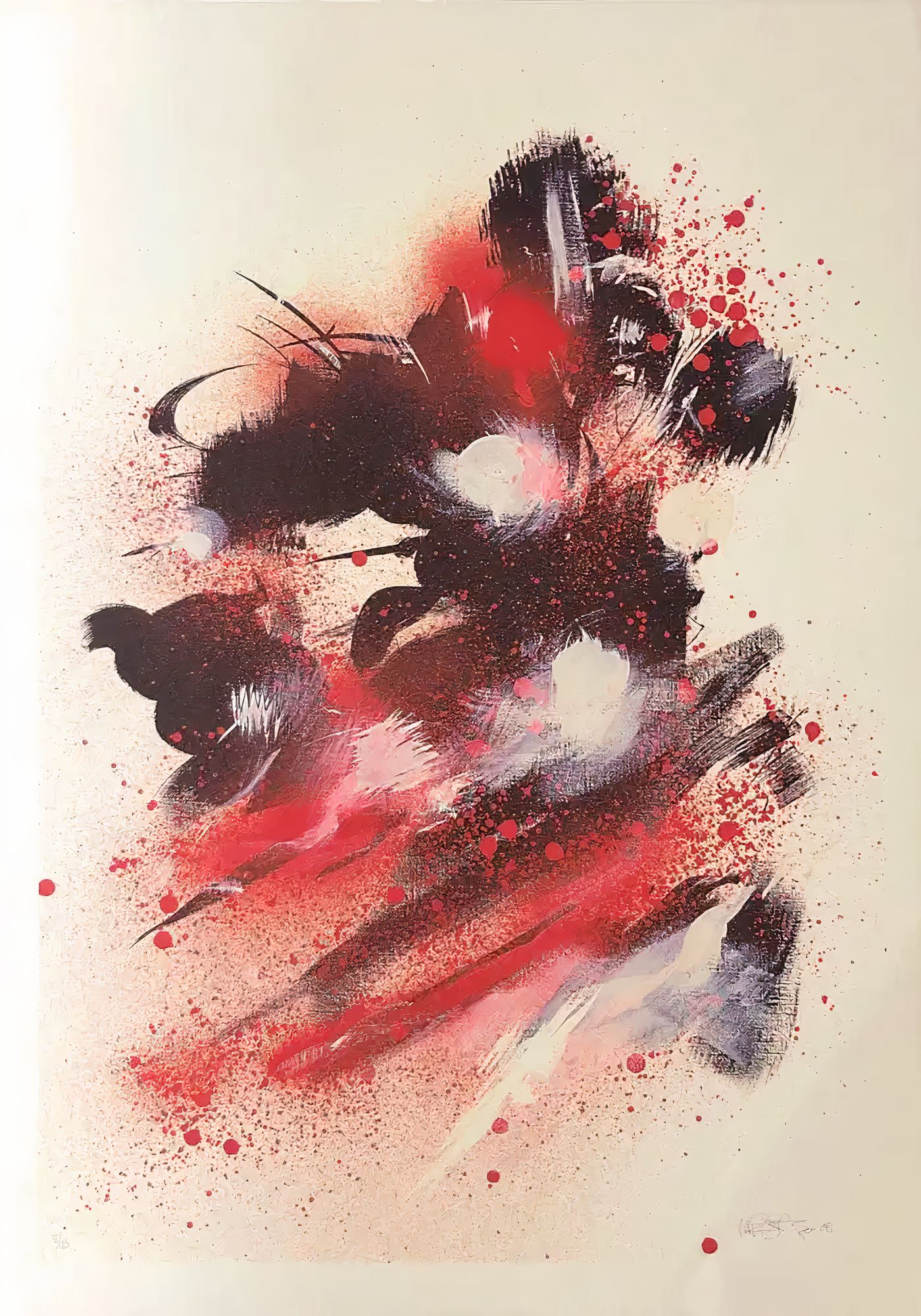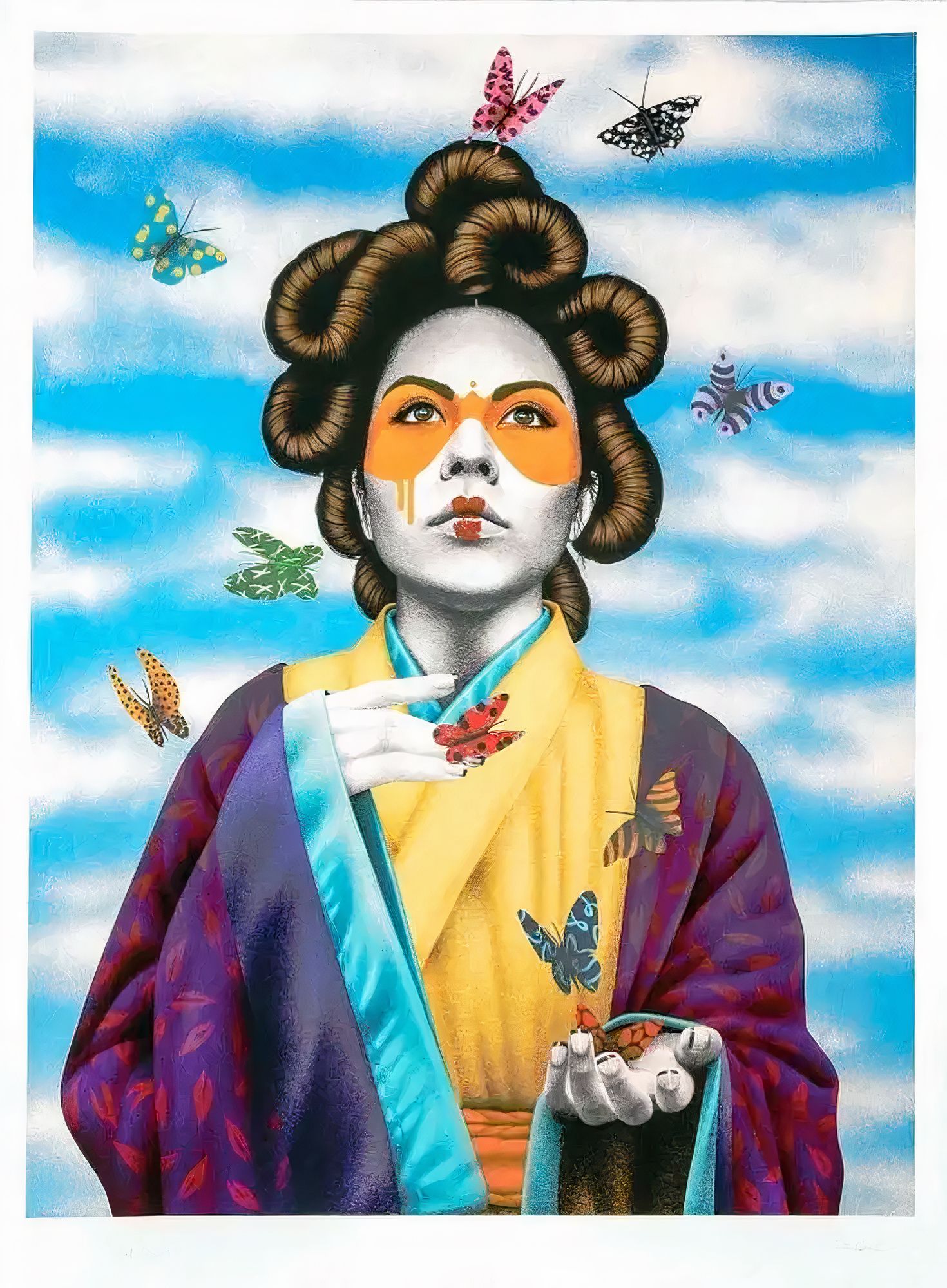
Understanding Prints (Part 2)

Everything You Need to Know About Prints - Continued
Explore more printmaking techniques with our ongoing guide to understanding the intricacies of prints. From the precision of intaglio to the high quality of giclée, we're providing detailed insights into various methods artists use to create prints. Join us for our second guide into the diverse world of printmaking.
Intaglio Printmaking
Intaglio is a specific type of printmaking, and it refers to a group of techniques where the image is incised or etched into a surface, and ink is applied to the incised areas for printing. The key characteristic is that the ink is held in the recessed lines or areas. Intaglio techniques include etching, engraving, drypoint, and aquatint.
What is an Etching?
Etching is an intaglio printmaking technique in which an image is incised into a metal plate, usually copper or zinc, using acid. The plate is then inked and wiped, leaving ink in the incised lines, which is then transferred to paper. Etching allows for a wide range of tonal and textural effects, making it suitable for producing prints with rich, fine, and intricate details.
The Sleep of Reason Produces Monsters by Francisco Goya is particularly famous for its powerful imagery and its enduring impact on the history of printmaking and art. This print is part of Goya's series of etchings titled "Los Caprichos," created in 1799.
 Francisco Goya, The Sleep of Reason Produces Monsters (1799). Etching and aquatint print, 15 x 21.5cm. Image from LACMA
Francisco Goya, The Sleep of Reason Produces Monsters (1799). Etching and aquatint print, 15 x 21.5cm. Image from LACMAWhat is an Engraving?
An engraving is an intaglio printmaking technique that involves incising a design into a metal plate, usually copper, using a tool called a burin. The incised lines hold the ink, and the plate is then inked and wiped to create the print. Engraving produces fine, precise lines with a crisp and clean appearance. It is often used for intricate and detailed illustrations and is known for its ability to capture delicate nuances.
Albrecht Dürer's engravings are renowned for their intricate details, skillful use of line, and symbolic and allegorical significance. One of his most famous engraving prints is The Four Horsemen of the Apocalypse, which depicts the dramatic and apocalyptic scene described in the Book of Revelation in the Bible.
What is a Drypoint print?
Drypoint is an intaglio printmaking technique that involves incising an image directly onto a plate with a hard-pointed needle or another sharp object. The term "drypoint" comes from the absence of acid used in traditional etching processes, as drypoint relies on the physical scratching or gouging of the plate's surface.
One famous drypoint print is Pablo Picasso’s The Weeping Woman, which is part of the artist’s iconic The Vollard Suite. The drypoint technique, characterised by the incising of lines directly into the metal plate with a hard-pointed needle, allowed Picasso to create expressive and raw lines, adding to the emotional intensity of the composition.
 Mr. Jago, So Much (2008). Giclée print on archival paper, 50 x 70cm
Mr. Jago, So Much (2008). Giclée print on archival paper, 50 x 70cmWhat is a Giclée print?
A giclée print is not created through traditional printmaking processes like intaglio, relief, lithography, or silkscreen printing. Instead, the term "giclée" refers to a high-quality, digital printing process commonly used to reproduce fine art and photographs.
Giclée prints utilise high quality inkjet printers that spray droplets of archival-quality inks onto surfaces like canvas or fine art paper. This method achieves a huge colour gamut, or the spectrum of colours that is distinguishable by the human eye, rendering exceptional image quality, colour, accuracy, and fine detail that makes them a top choice for reproducing paintings and photographs.
Starry Night is one of Van Gogh's most famous paintings, and high-quality giclée prints of this masterpiece are widely available. The swirling, expressive night sky and the distinctive cypress tree have made Starry Night an iconic image in art history.
What is a Lenticular print?
Lenticular printing is a specialised technique that falls under the category of additive processes in printing. A lenticular print is a type of printed image that utilises a special technology to create the illusion of depth or motion when viewed from different angles. The term "lenticular" refers to the use of a lenticular lens, which is a series of small, closely spaced lenses that are placed over the printed image.
The printed image itself is composed of multiple frames or images, each slightly different from the others. These frames are interlaced or combined in a way that corresponds to the viewing angles created by the lenticular lens. As a result, when you look at a lenticular print from different angles, you see different frames of the image, creating the perception of motion, depth, or a 3D effect.
One notable example of a lenticular work is that of contemporary artist Nam June Paik. His piece titled Good Morning, Mr. Orwell, created in 1984, features lenticular prints among other elements. The lenticular prints in this work add a sense of motion and transformation to the visual experience.
 Fin DAC, Nabigwa (2023). Mixed media/screenprint, 56 x 76cm.
Fin DAC, Nabigwa (2023). Mixed media/screenprint, 56 x 76cm.Can a print be made using different printmaking techniques?
A print can be made using different printmaking techniques, often referred to as a ‘multimedia print’ or ‘mixed media print’. Artists may combine various traditional and contemporary printmaking methods to achieve unique and diverse effects within a single artwork.
For example, an artist might create a print using a combination of etching and aquatint for certain elements, then incorporate woodcut or linocut for other areas. The choice of techniques allows artists to experiment with different textures, tones, and visual elements within a single composition. While the term ‘multimedia prints’ may not be a widely recognised category, artists have frequently blended printmaking with other media to create innovative and compelling works of art.
If you missed our first Print Guide, be sure to check it out here.
